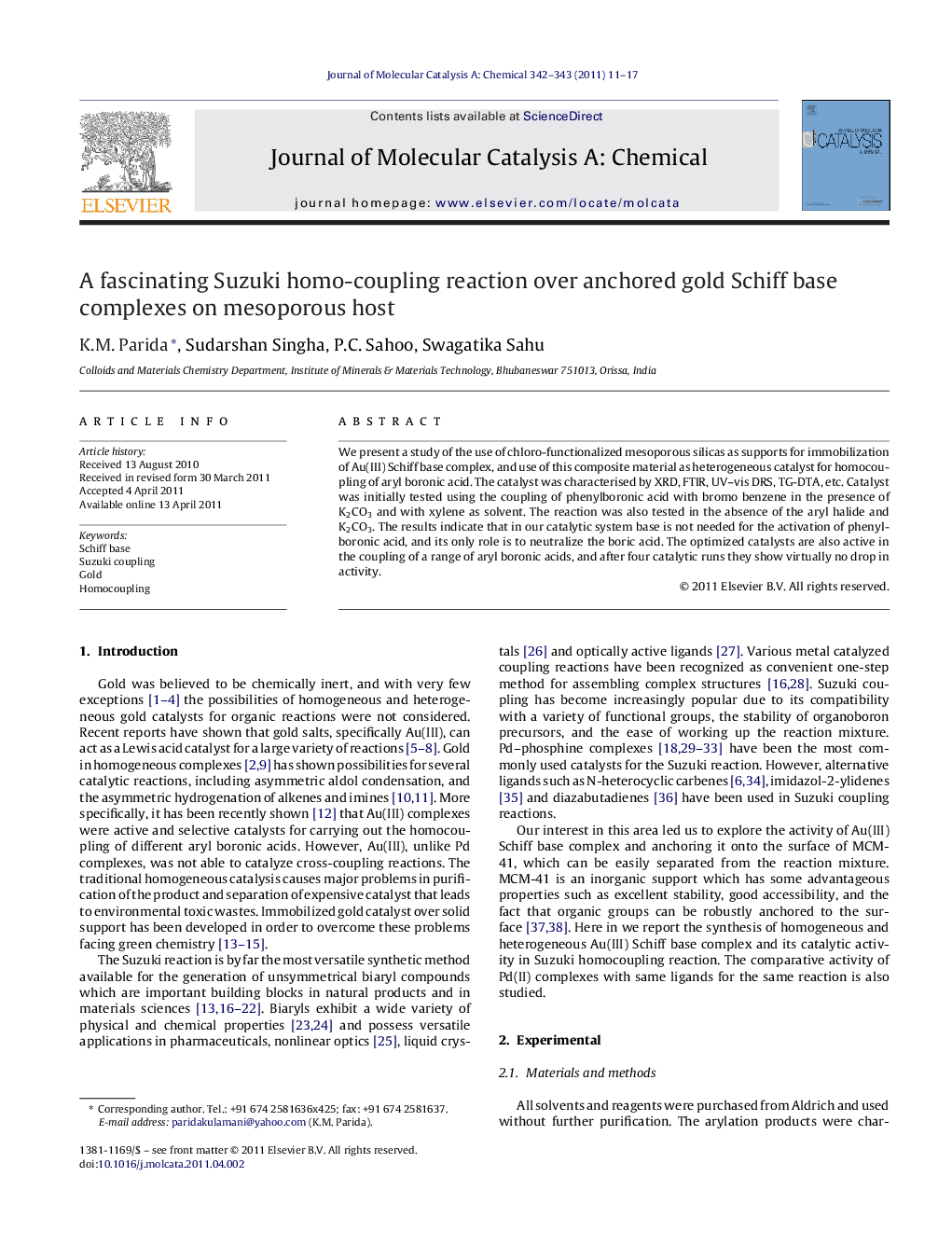| Article ID | Journal | Published Year | Pages | File Type |
|---|---|---|---|---|
| 66298 | Journal of Molecular Catalysis A: Chemical | 2011 | 7 Pages |
We present a study of the use of chloro-functionalized mesoporous silicas as supports for immobilization of Au(III) Schiff base complex, and use of this composite material as heterogeneous catalyst for homocoupling of aryl boronic acid. The catalyst was characterised by XRD, FTIR, UV–vis DRS, TG-DTA, etc. Catalyst was initially tested using the coupling of phenylboronic acid with bromo benzene in the presence of K2CO3 and with xylene as solvent. The reaction was also tested in the absence of the aryl halide and K2CO3. The results indicate that in our catalytic system base is not needed for the activation of phenylboronic acid, and its only role is to neutralize the boric acid. The optimized catalysts are also active in the coupling of a range of aryl boronic acids, and after four catalytic runs they show virtually no drop in activity.
Graphical abstractThe heterogenized gold Schiff base complex shows high activity for homocoupling of aryl boronic acid, which can be reused multiple times.Figure optionsDownload full-size imageDownload high-quality image (13 K)Download as PowerPoint slideHighlights► The present study explores the homocoupling of aryl boronic acid by using Au(III) Schiff base complex anchored mesoporous silicas. ► The catalyst was characterised by XRD, FTIR, UV–vis DRS, TG-DTA, etc. ► Catalyst was tested using the coupling of phenylboronic acid with bromo benzene both in the presence and absence of K2CO3 and with xylene as solvent. ► The results indicate that in our catalytic system base is not needed for the activation of phenylboronic acid, and its only role is to neutralize the boric acid. ► The optimized catalysts are also active in the coupling of a range of aryl boronic acids, and after four catalytic runs they show virtually no drop in activity.
